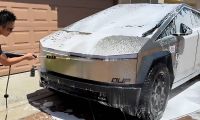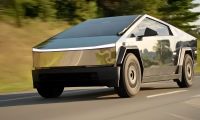The Toyota RAV4 earned a score of “Poor” on the latest Institute for Highway Safety’s (IIHS) small frontal overlap crash test. This test was a preliminary test round done by IIHS to see if automakers are providing the same safety systems on both sides of the vehicles being tested. In the case of the Toyota RAV4, which had previously earned a “Good” score on the driver’s side, the answer to this important safety question is a definitive “No.”
- Why This Test Matters So Much
Since it was started, the Institute for Highway Safety’s (IIHS) small frontal overlap crash test has always been performed on the driver's side of the vehicle. This important test simulates a vehicle hitting a telephone pole or other unmovable object with just the front 25% of the vehicle. Since such a small amount of the vehicle impacts the barrier, less of its crash structure is able to absorb the impact, making this the toughest of all frontal impact tests.
All of the top-selling vehicles in the compact crossover class now earn a “Good” score on the test when done on the driver’s side like they expect it to be. However, Toyota apparently did not include that same level of safety on the passenger side, which they did not expect to be tested. (More on page 2)
Had the result of this test been included in its evaluations fort Top Safety Pick, the RAV4 would have been eliminated from consideration. IIHS may add the passenger-side test for 2018. Toyota was not alone in doing worse on the passenger side test, but had the most disappointing results. Subaru ‘s Forester and Nissan’s Rogue both scored “Marginal” on the new passenger side test. The Mazda CX-5 and Honda CR-V scored “Acceptable.” IIHS also tested the smaller than compact Buick Encore, which earned an “Acceptable” rating.
Torque News called out the RAV4 in 2013 when it was tested and scored “Poor” on the conventional small frontal overlap test. We also reported that the vehicle had been redesigned in 2015 and was retested and scored “Good.” Toyota obviously did not add the improvements to the passenger side. The test is not a fluke. IIHS noted that the RAV4 is “asymmetrical” in its appearance from side to side. Toyota didn’t hide its lack of safety structure. Some automakers may have. Some that did worse appeared to have the same structural components, but IIHS suspects they may be slightly thinner and weaker.
In 2013 we covered the small frontal overlap test after automakers had time to adopt new standards to score well on it. This author's suggestion then, as it is now, was not to buy a new car that cannot score “Good” on a small frontal overlap test. With the newest information available, the list of vehicles that can score “Good” on this test when done on either side is narrowed to just one model, the 2016 Hyundai Tuscon.













Comments
Since introduction of the
Permalink
Since introduction of the redesigned RAV4 in 2013 it has been embarrassingly obvious that Toyota's goal was to maximize profit through cheapening the content of the vehicle. RAV4 features dropped for 2013: V6 Engine option,3rd row option,Full size spare tire,Optitron gauges,Headlamps "ON" indicator,Valet key on some models,LED tail lights & brake lights,Auto OFF headlights (except Limited),Variable intermittent wipers on LE,Seat fold-down levers in cargo area,Sliding adjustable 2nd row seats,Door sill protectors,12v Power outlet in cargo area,Large under floor storage compartment,
Sunglasses storage bin,Sun visor extensions (except Limited),Dual-level center console storage,
Locking glove box,Upper glove box with door,Footwell lighting (Limited),110V AC power outlet (Limited),Real Leather seating,Cross bars on roof rack,Hill Assist Control (HAC),Downhill Assist Control (DAC),Longer tonneau cover with headrest clips,Fender flares on Sport and Limited,
Body colored front and rear bumpers,XM Satellite radio (except with Navigation),Auto Up/Down driver's power window on LE. If I were in the market today the RAV4 would not be on my list of choices.